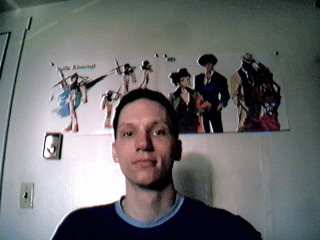
Greetings, I don't have much time, but I'd like to say hello. I'm not getting much done in HM. I wish I could work on the important things, but maybe tonight or tomorrow.
I got my hair cut very short yesterday as you can see. It's about 2 cm, so it's there, it's just not as there as it was.
Today's lesson is that of compression. I have of course explained this topic before, but I'd like to go over it again. This photograph is huge when compressed with lossless png. When compressed with lossy jpeg, it is small. So how does one get small and lossless photograph? One does not. A person can get perceptibly lossless with jpeg. A person can get lossless with png, but a photograph will usually be huge. Png cannot handle complexity, randomness, and such. But it isn't Png's fault that much. There is a law of information that says that information held (complexity) requires space.
The exception that I often think of is: procedural images (fractal or demo scene). A png cannot compress procedural images very well while a program written to draw procedural images can. What does that mean to an information scientist? It means that procedural data can sometimes fake having large amounts of information while really it has very little. Wolfram is interested in the research of cellular autonoma. I listened to a lecture he gave over the internet. It was interesting, but I had a hard time thinking of my life in the terms of Conway's Game of Life. My suggestion to those that wish to pursue completely different ways of thinking of the universe and everything in it: write down the math and physics first, then allow others to test it.

-
Leave a Reply





Comments: 0
Leave a reply »